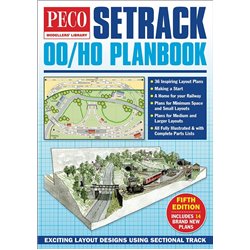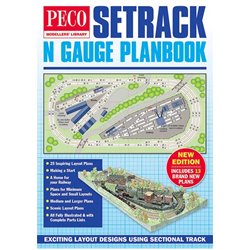Generally, plastic model plane kits do not come with plinths supplied. Nowadays, the majority of kits are designed to...
No products
Product successfully added to your shopping cart
There are 0 items in your cart. There is 1 item in your cart.
Search Tips
Christmas and New Year
We are dispatching orders every weekday apart from Christmas Day, Boxing Day and New Year's Day.
If you order is time critical, select next day delivery at checkout.
The shop in Sandown is closed from 25th December, reopening on 30th December.
I struggle to think of achievable track plans, what can I do?
Dreaming up track plans for a layout is somewhat an art in itself. A common mistake is to sketch a layout on a scrap piece of paper that realistically, has no chance of fitting into the space available (we're all guilty of that at one time or another), but don't worry help is at hand.
If you are having a little trouble in the inspiration (or the reality-check) department, there are plenty of publications out there with readymade track plans galore to help get you started. Some feature set-track layouts, others concentrate on real-life locations, so have a good look at all of the guides available from online plans to physical publications to find one that suits your requirements. Some cost as little as just a few pounds and even if you don't pick an exact layout to use, you'll no doubt find yourself enlightened and inspired after reading one.
If you are not convinced that someone else's design is the way to go, a few tips may be all you need to get the creative juices flowing. Why not try taking a look at some pictures of a few of your favourite stations? it's unlikely you will have the space to recreate the station exactly, but why not use it for inspiration only and design a scaled-down version. This method for creating a track plan is more common than you might think and a satisfying layout can often be achieved using little more than hints of the prototype.
Another good tip is to try not to get too ambitious. Filling your baseboard with tracks will leave you with little room for scenery. Think very carefully about what space your village, hills or fields will need, and incorporate that space into your track plan. The worst thing you can do is to shoehorn your scenery into leftover space, although your trackwork may end up looking great, your scenery will appear incorrectly spaced.
Many modellers will agree that planning a model railway is one of the most exciting parts of the build. So enjoy throwing ideas around, and at this stage, don't feel you have to be faithful to a particular design or concept. Come up with a dozen, a hundred, even a thousand ideas if you want because you will likely find elements in each one that excites or has potential, you never know, your eventual layout might well end up being a montage of numerous plans.
Happy planning.
Click here to receive the tips weekly in your mailbox. You can unsubscribe at any time.










